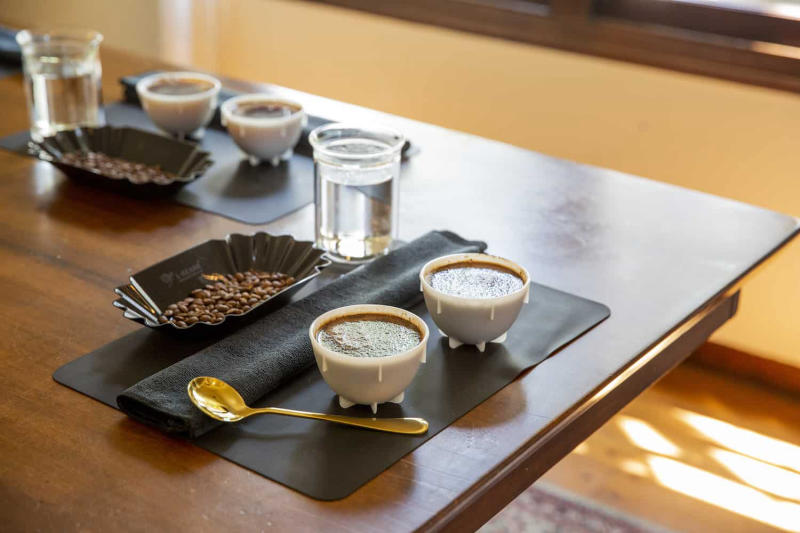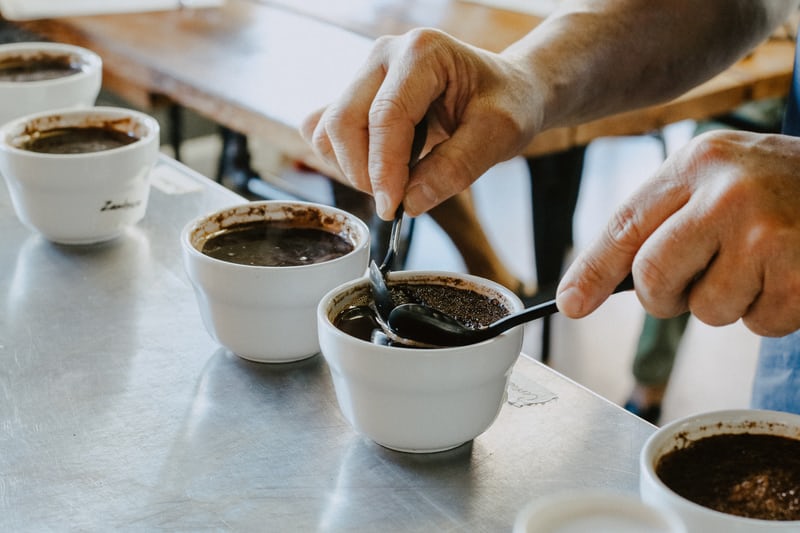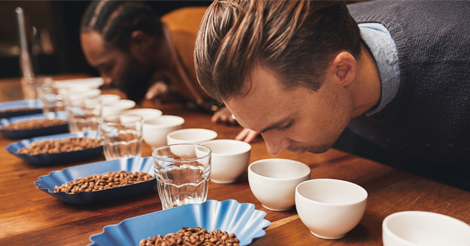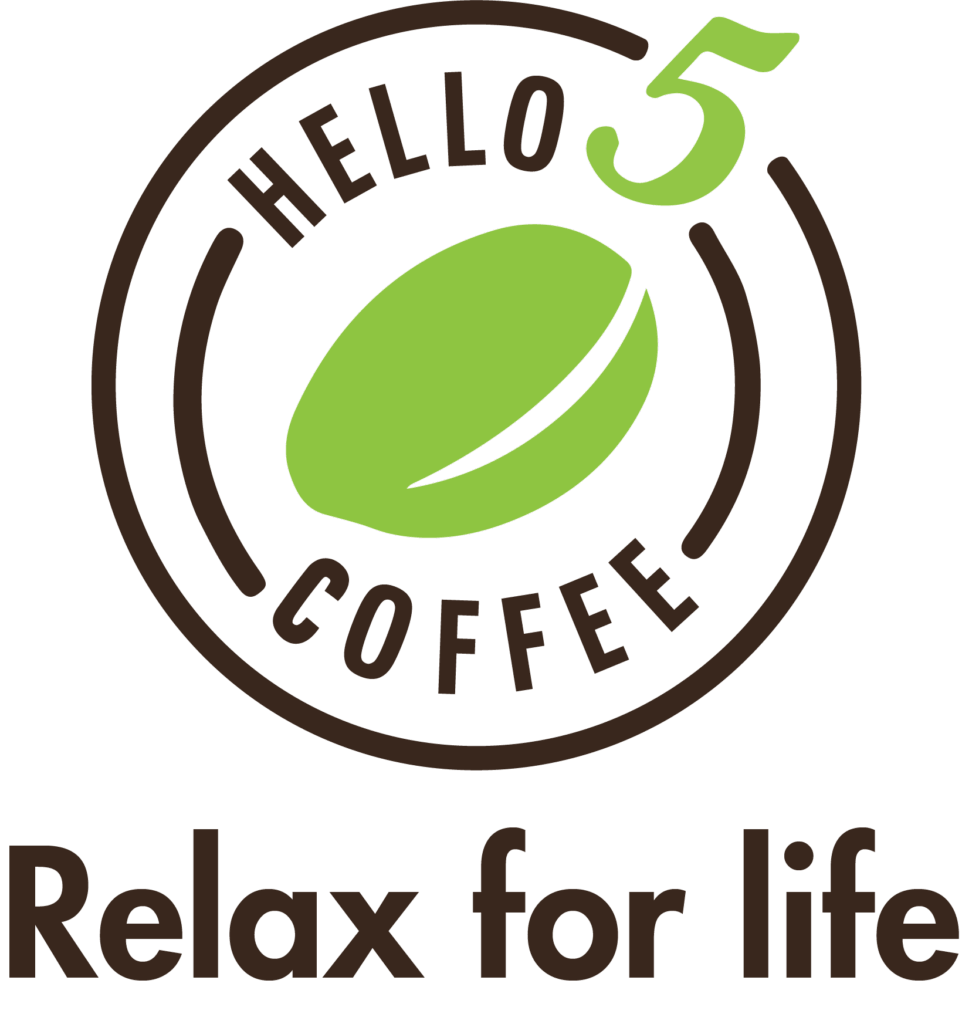Similar to wine tasting, coffee also requires assessment by experts through a meticulous and thorough cupping process. Do you know what coffee cupping is? What is the purpose of cupping? What skills are needed for professional coffee cupping? If you don’t have much information yet, let’s explore together with Hello 5 Coffee!
To ensure quality coffee for brewing perfect-tasting beverages to serve customers, large-scale and professional coffee establishments often conduct cupping for quality assessment. So what exactly is cupping and why is its purpose so important?
What is Coffee Cupping?
Coffee cupping is a systematic procedure for evaluating the quality and specific characteristics of each coffee variety, involving brewing and tasting the desired coffee to assess aroma – flavor – acidity – bitterness – and other factors that constitute the overall perception when enjoying a finished cup of coffee.

In reality, cupping can be performed by anyone, from professional experts (called Cuppers) to ordinary coffee drinkers who have some understanding of cupping techniques. Therefore, the cupping process of the same coffee type can yield different results because it relies on individual sensory evaluation, with each person having different perceptions.
In the coffee industry, cupping is meticulously and rigorously implemented, following a standardized system from equipment and tool preparation, qualified personnel, to evaluation practice and scoring methods to achieve the most objective quality assessment results for coffee, ensuring that the final product served to customers achieves the highest satisfaction levels.
What is the Purpose of Cupping?
Cupping is believed to have begun in the late 1800s, when merchants demanded to taste various coffee types for comparison and to decide which coffee they wanted to purchase and at what price, high or low. According to them, a coffee bean might have quite good to very good external appearance, such as color, uniform size, surface that appears to have no defects at all, but the inside might not be “beautiful” – it could contain negative flavors due to inherent issues or changes during storage, transportation, or processing. Therefore, the best and only way to know coffee quality is to taste it.
In 1999, cupping was used in Cup of Excellence competitions, and was later formalized by the Specialty Coffee Association of America (SCAA) which created implementation guidelines titled “The Coffee Cupper’s Handbook,” which has been accepted and widely applied by the international specialty community to this day.
The coffee industry therefore also uses this cupping tasting method to evaluate the characteristics of each coffee type, compare and make purchasing decisions, determine buying-selling prices, and simultaneously establish consistency in quality assessment.
For example! Coffee can be classified into many grades. A coffee grown in Brazil will not have the same flavor as coffee grown in Colombia. An Arabica coffee from Central America cannot substitute for coffee with the same name but grown in East Africa. Coffee classification aims to determine standard prices and is also the best way to identify the flavor of each bean type. In some cases of specialty coffee, quality assessment helps select coffee of sufficiently high quality to be labeled “Specialty coffee” for market introduction.

In summary, through cupping, all characteristics present in each coffee type will be revealed clearly and in the most detailed manner. Cupping results not only describe good and positive characteristics but also describe poor and negative characteristics, clearly pointing out specific errors in the coffee bean production process.
Technical Standards for Cupping
The original cupping standard was developed for Arabica coffee in Brazil that needed careful selection before being brought to auction. Later, cupping techniques were applied to more coffee varieties and conducted by more diverse participants, not just experts, roasters, buyers, and importers.
SCAA’s cupping standard is evaluated based on a 100-point scale according to a system of 10 quality attributes, with each separate attribute receiving a maximum of 10 points. These are:
(1) fragrance/aroma – (2) flavor – (3) aftertaste – (4) acidity – (5) body – (6) uniformity – (7) balance – (8) clean cup – (9) sweetness – (10) overall.
Standard Cupping Procedure
According to The Coffee Cupper’s Handbook by SCAA, the standard cupping procedure is performed in detail as follows:
a/ Preparation
- Coffee sample: prepare 8.25g coffee sample – roasted at medium light level for 8-12 minutes, degas for 4-24h then choose fine grind level, 70-75% of beans pass through size 20 screen according to U.S mesh standard
- Water: prepare 150ml boiling water at 90.5-96.1°C temperature
- Equipment: bowls, spoons, timer, scale, evaluation forms and note-taking materials
b/ Implementation
Proceed to taste and try each coffee sample to evaluate it sequentially through 6 steps: (1) dry fragrance – (2) wet aroma – (3) taste – (4) nose – (5) aftertaste – (6) mouthfeel
Details:
- Step 1: Dry Fragrance
Dry fragrance aromas belong to group 1 in SCA’s flavor wheel, evaluated immediately when coffee is freshly ground, belonging to one of the light fragrances identified as: floral (flowery) – fruity (fruity) – herbal (herby)
- Step 2: Wet Aroma
When pouring hot water onto ground coffee, aromas are extracted and dispersed into the air. At this time, the cupper will identify light aromas from group 1 mixed with medium aromas from group 2, which are: nutty, cereal (nutty) – basic aroma (caramelly) – chocolate aroma (chocolaty).

To ensure the aroma extraction process occurs evenly and completely, near the end of this stage the cupper will use a spoon to gently stir the floating foam layer on top several times to fully saturate any coffee that hasn’t absorbed water (if any) and dissolve them. Aromas will also be released more strongly when this foam layer is broken – then continue to perceive and identify wet aromas once more for accuracy. The aroma notes identified at this time are recorded as break aroma.
- Step 3: Taste
When the extraction threshold reaches 18-22%, the cupper removes the remaining foam layer from the surface and begins tasting. Use a small spoon that can hold 6-8ml of coffee solution to take samples for tasting. The evaluation is based on the interaction of 4 tastes present in coffee: sour – sweet – salty – bitter.
- Step 4: Nasal Aroma
This stage is evaluated simultaneously with the tasting stage. When bringing the coffee sample solution into the mouth to perceive taste, at that time, aromas from group 2 and heavy aromas from group 3 will be dispersed inside the mouth cavity, the back part of the olfactory sense will perceive characteristic aromas such as: resinous (turpeny) – spicy (spice) – charcoal burnt (carbony)
- Step 5: Aftertaste
This stage is evaluated after swallowing the coffee. This action causes the epiglottis to snap back to its original position and inadvertently pushes an air stream carrying heavy aromas remaining on the tongue back up toward the nose. The cupper will then perceive the predominant, characteristic heavy aroma group belonging to group 3.
- Step 6: Mouthfeel
This is the final evaluation stage that helps identify the physical sensation of the tongue, regarding viscosity, coffee texture, etc.
The cupping procedure is not yet complete at this point. When the coffee has completely cooled, repeat from step 3 to step 5 several more times to recheck perceptions and evaluate whether the information is complete and most accurate.
c/ Evaluation
For each evaluation step, the cupper needs to record completely and honestly all personal perceptions at each implementation stage. Finally, a comprehensive evaluation chart will be obtained, used to compare and cross-reference with other cuppers to produce the most objective and straightforward assessment results.

Skills Required in the Coffee Cupping Process
It can be said that cupping is not at all difficult to perform, but to cup correctly and completely is not easy at all. Quality assessment experts (cuppers) or baristas responsible for authentic cupping all need to equip themselves with necessary knowledge and skills about coffee, receive systematic step-by-step training to ensure cupping results are as objective and honest as possible. More specifically, sensory skills are considered the “golden key” and are mandatory requirements that each cupper must possess and be trained in as well as continuously improve. Typically, professional cuppers all go through courses and receive SCA/Q-Grader certification to confidently perform cupping techniques.
Additionally, patience and continuous practice to improve skills – calmness and humility – knowing how to listen and eager to learn are essential qualities that a professional cupper must have.
Finally, experiencing as much as possible and trusting one’s own sensory capacity for taste and smell is the most core element that helps upgrade both professional skills and craftsmanship for oneself.
The purpose of the cupping process is not just to enjoy coffee; it leans more toward commercial purposes, aimed at evaluating coffee quality for purchasing and serving. Therefore, many people need cupping to satisfy their objectives. However, for successful cupping, cuppers or baristas need to understand precisely what cupping is – what the purpose of cupping is – the standard cupping process as well as fully equip themselves with the necessary skills when cupping to ensure the most accurate cupping results.
